Input interpretation

propylene glycol
Chemical names and formulas

formula | CH_3CH(OH)CH_2OH Hill formula | C_3H_8O_2 name | propylene glycol IUPAC name | propane-1, 2-diol alternate names | 1, 2-dihydroxypropane | 1, 2-propanediol | 1, 2-propylene glycol | propane-1, 2-diol mass fractions | C (carbon) 47.4% | H (hydrogen) 10.6% | O (oxygen) 42.1%
Lewis structure
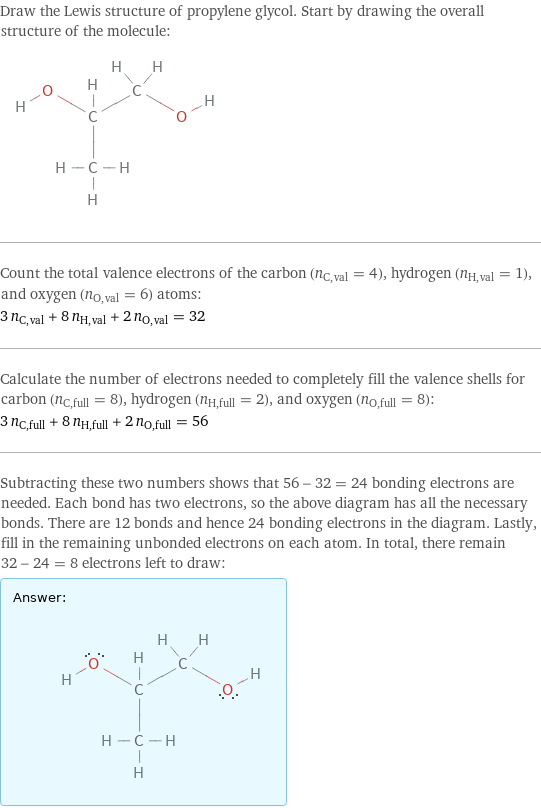
Draw the Lewis structure of propylene glycol. Start by drawing the overall structure of the molecule: Count the total valence electrons of the carbon (n_C, val = 4), hydrogen (n_H, val = 1), and oxygen (n_O, val = 6) atoms: 3 n_C, val + 8 n_H, val + 2 n_O, val = 32 Calculate the number of electrons needed to completely fill the valence shells for carbon (n_C, full = 8), hydrogen (n_H, full = 2), and oxygen (n_O, full = 8): 3 n_C, full + 8 n_H, full + 2 n_O, full = 56 Subtracting these two numbers shows that 56 - 32 = 24 bonding electrons are needed. Each bond has two electrons, so the above diagram has all the necessary bonds. There are 12 bonds and hence 24 bonding electrons in the diagram. Lastly, fill in the remaining unbonded electrons on each atom. In total, there remain 32 - 24 = 8 electrons left to draw: Answer: | |
3D structure
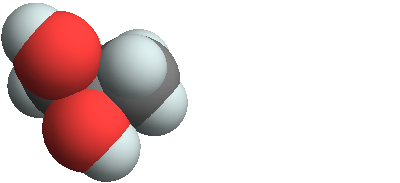
3D structure
Basic properties
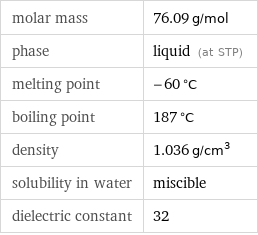
molar mass | 76.09 g/mol phase | liquid (at STP) melting point | -60 °C boiling point | 187 °C density | 1.036 g/cm^3 solubility in water | miscible dielectric constant | 32
Hydrophobicity and permeability properties

experimental LogP hydrophobicity | -0.92 predicted LogP hydrophobicity | -1.09 predicted LogS | 1.1
Basic drug properties

approval status | experimental | small molecule drug categories | solvent | vehicle
Liquid properties (at STP)
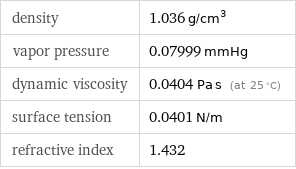
density | 1.036 g/cm^3 vapor pressure | 0.07999 mmHg dynamic viscosity | 0.0404 Pa s (at 25 °C) surface tension | 0.0401 N/m refractive index | 1.432
Units

Thermodynamic properties

specific heat capacity c_p | liquid | 2.507 J/(g K) molar heat capacity c_p | liquid | 190.8 J/(mol K) specific heat of formation Δ_fH° | gas | -5.648 kJ/g molar heat of formation Δ_fH° | gas | -429.8 kJ/mol molar heat of vaporization | 66.27 kJ/mol | specific heat of vaporization | 0.871 kJ/g | molar heat of combustion | 1828 kJ/mol | specific heat of combustion | 24.02 kJ/g | thermal conductivity | 0.2 W/(m K) | critical temperature | 676 K | critical pressure | 5.941 MPa | (at STP)
Chemical identifiers
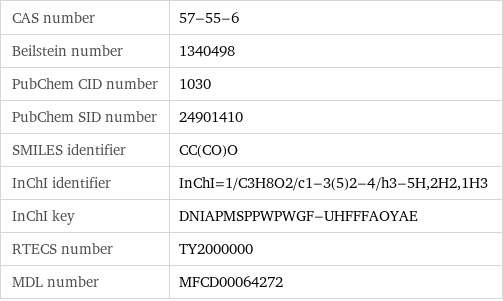
CAS number | 57-55-6 Beilstein number | 1340498 PubChem CID number | 1030 PubChem SID number | 24901410 SMILES identifier | CC(CO)O InChI identifier | InChI=1/C3H8O2/c1-3(5)2-4/h3-5H, 2H2, 1H3 InChI key | DNIAPMSPPWPWGF-UHFFFAOYAE RTECS number | TY2000000 MDL number | MFCD00064272
NFPA label

NFPA label
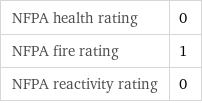
NFPA health rating | 0 NFPA fire rating | 1 NFPA reactivity rating | 0
Safety properties
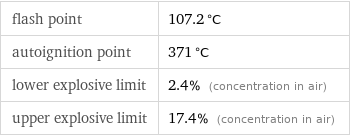
flash point | 107.2 °C autoignition point | 371 °C lower explosive limit | 2.4% (concentration in air) upper explosive limit | 17.4% (concentration in air)
Toxicity properties

odor | odorless

long-term exposure limit | 156 mg/m^3 (over 8 hours) RTECS classes | agricultural chemical and pesticide | mutagen | reproductive effector | human data | primary irritant